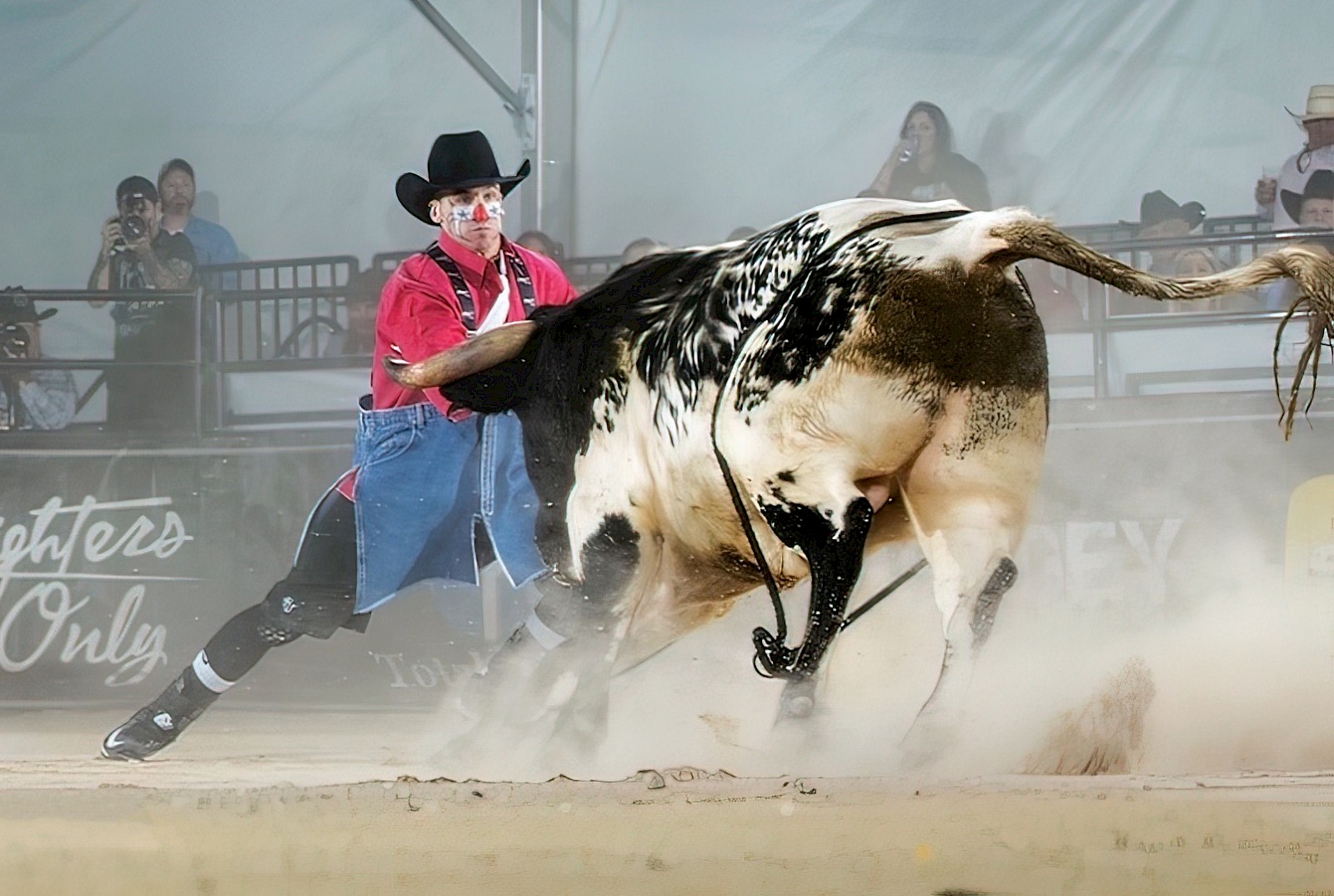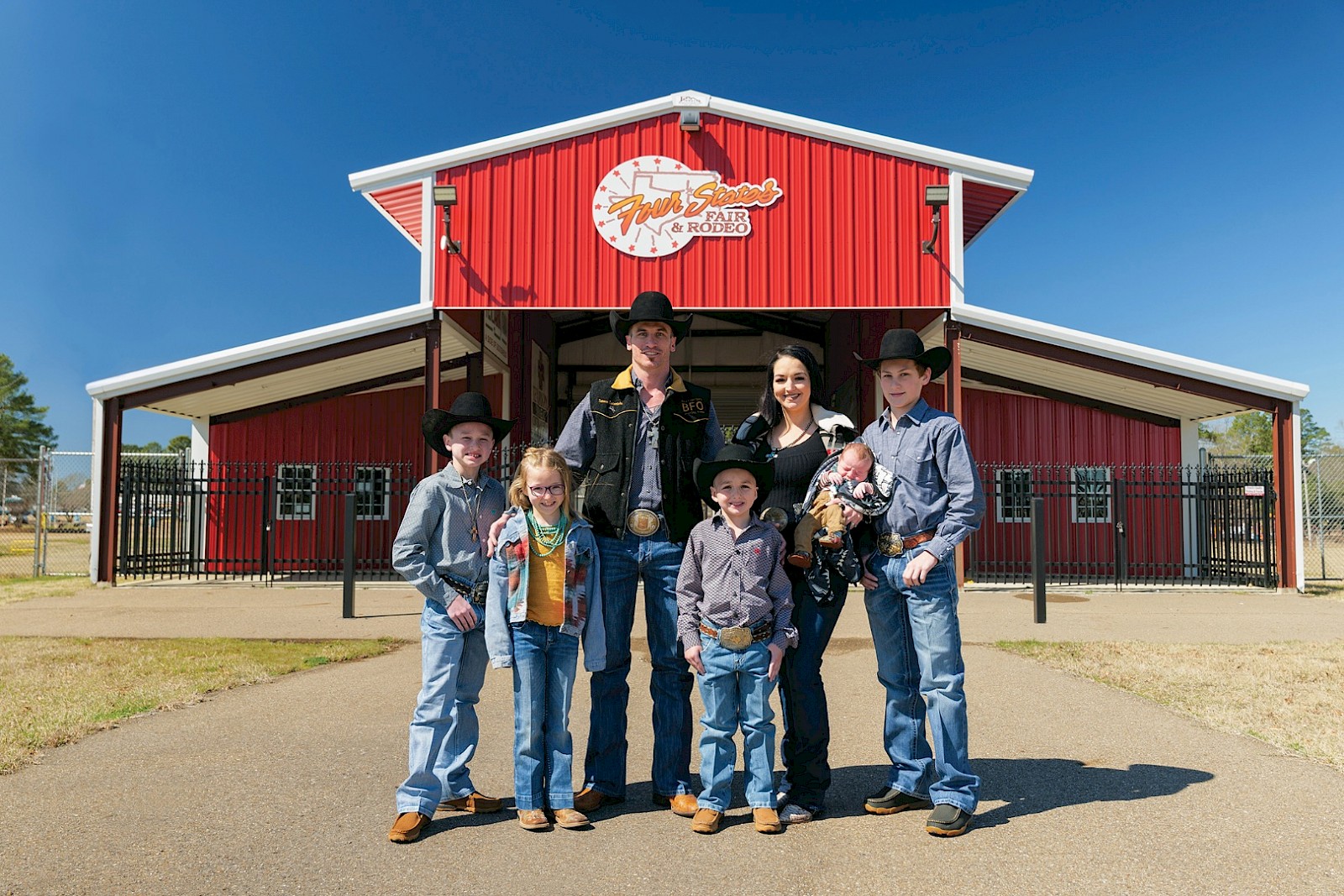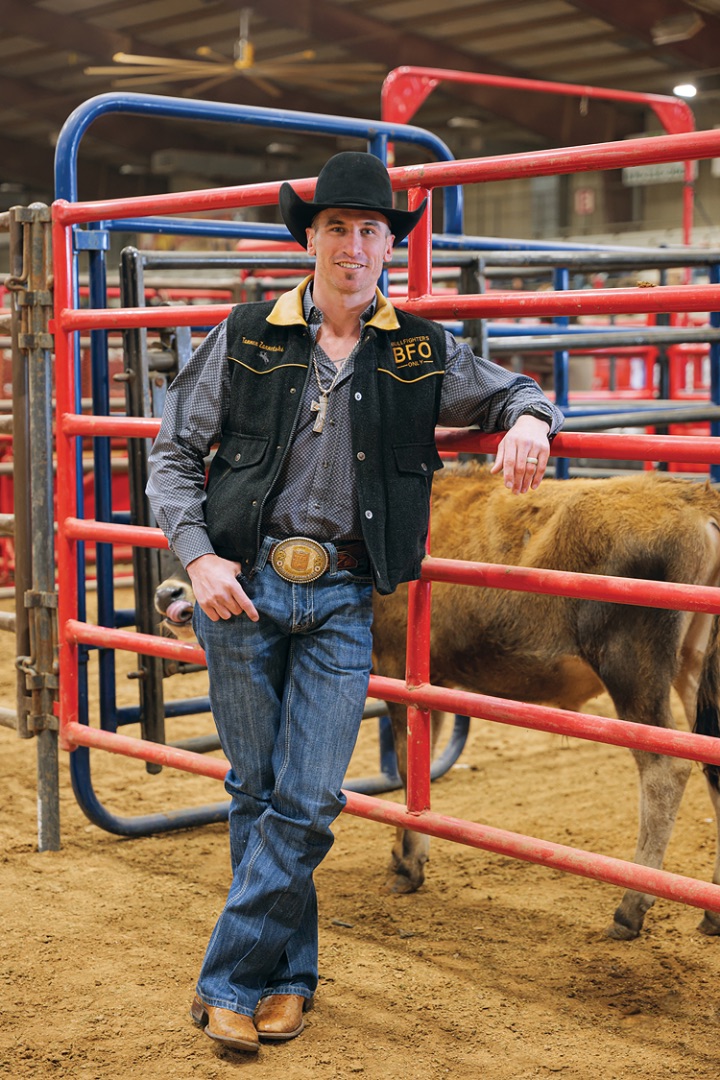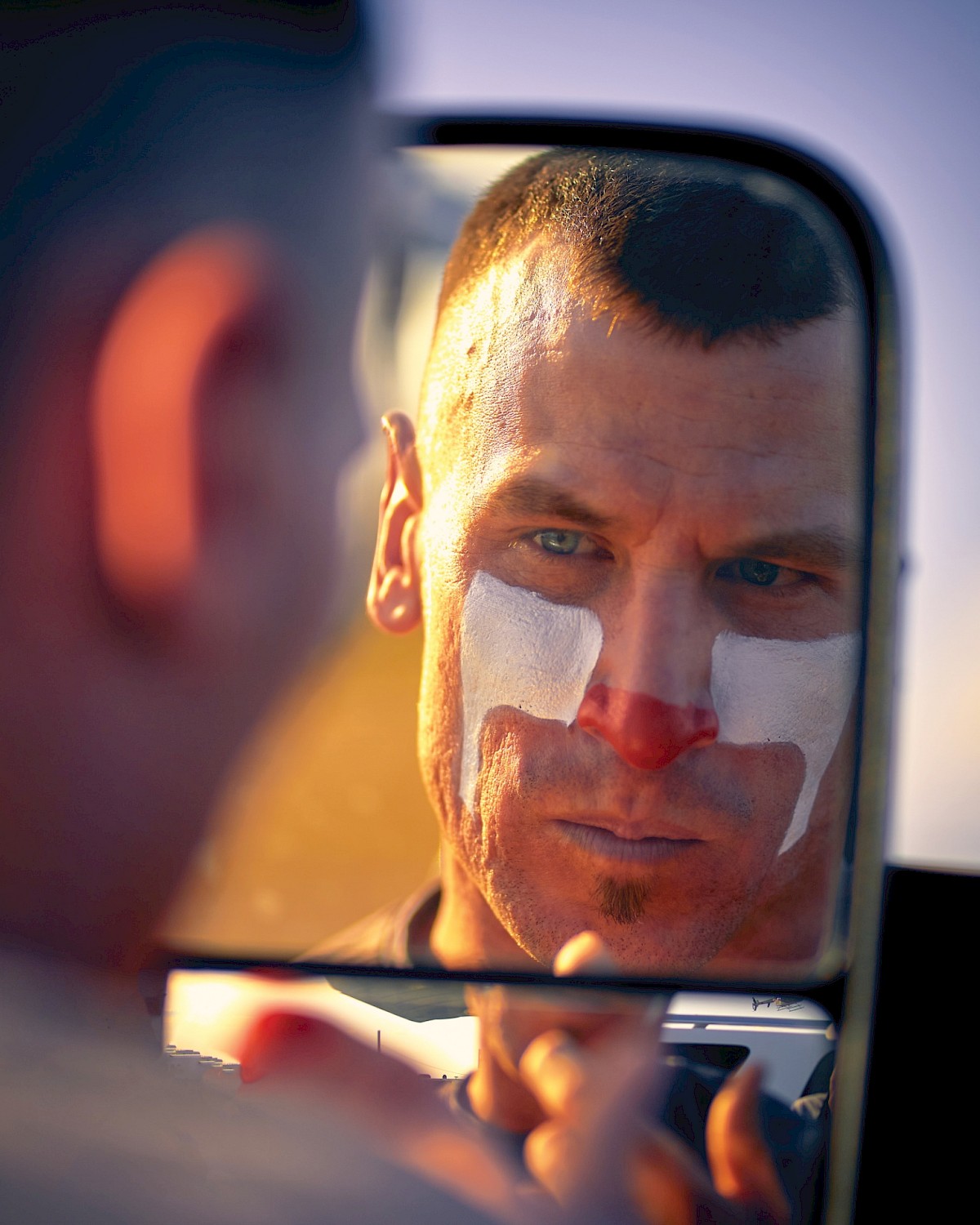No Clowning Around
The atmosphere is buzzing with excitement. It is that hand-on-your-heart, American flag experience. It is beautiful horses, cowboy hats, boots and shiny buckles. It is the dirt arena and the announcer introducing events and contestants. Even the smell signals that you are about to see something spectacular. The stands are full of rodeo fans who have come to participate in a piece of southern culture.

One of the most exciting, and by far, the most dangerous rodeo events is bull riding. The rider climbs in the pen to mount 1500 pounds of fierce, aggressive, unpredictability. He grips the rope, tucks his chin and gives the nod to pull the gate. You can feel the heart-pounding excitement as the bull bucks and twists, trying to rid himself of his unwelcome passenger. The rage and rancor do not subside when the rider, finally flung from his host, hits the ground. Now come the hooves and horns. Possibly the only thing scarier than being on the back of a bucking bull is being under one, and that is where this story begins because this tale is not about a bull rider. Heck, it’s not even about the bull. This is a story of heroism, skill and death-defying courage mixed with a dash of downright crazy. Because, when everyone else is keeping as much distance and fencing as possible between themselves and that raging bull, there is one who runs right in to save the day—the bullfighter.
Texarkana native, Tanner Zarnetski, knows a thing or two about bulls. He has been riding them or charging toward them to rescue other riders for more than 20 years. Tanner started out riding bulls as a kid, but he soon discovered he was “better at fighting bulls than riding them.” He explained, “At eleven years old, I began investing in what I wanted to do. My mom would take me to rodeos, and if I won, I would use that money for fuel and entry fees for the next one [rodeo].” When he was not riding bulls, he began to show a knack for helping other riders escape danger by commanding the bulls’ attention. “I had buddies paying me five dollars every time they got on a bull just to help protect them.” Tanner recollects he was even compensated for his efforts with pearl snap western shirts. By the time he was 17, Tanner had made a name for himself in the local rodeo circuit and was contacted by Felton Jackson of Hope, Arkansas, about fighting bulls for the Arkansas Rodeo Association. His response “Let’s do this!” For the next three years, Tanner continued to spend his weekends both riding bulls and fighting them. As a young husband and father, he came to realize the high cost associated with competing in rodeos, but he loved the sport. Tanner learned while bull riding only rewards the winners, bullfighting pays the bills. Tanner walked away from bull riding permanently at the age of 20. Since then, he has been a regular bullfighter on the Professional Rodeo circuit.
At one time, bullfighters were known simply as rodeo clowns. These were the guys who painted their faces, wore baggy clothes and suspenders and jumped in to help a dismounted rider get out of harm’s way. They also worked to entertain the crowds between the events. These days, rodeo clowns and bullfighters are two separate roles. The rodeo clown provides a bit of comic relief, but bullfighters are only there to protect the riders. While some bullfighters choose to dress athletically in jerseys with no face paint, Tanner has chosen to follow the model of traditional bullfighting attire. He is easily recognizable in his red shirt, denim baggies with black suspenders and trademark face paint. “I like the face paint and the baggies… people get to know you and recognize you.”

Bullfighting is a dangerous sport that brings bullfighters face to face with a thrashing and sometimes bone-crushing beast, and Tanner has definitely had his share of bone-crushing encounters. During his career, he has broken his ribs, fingers, wrist, hip and knee. He has fractured his vertebrae, punctured lungs and tore his rotator cuff. Currently, he is preparing to undergo reconstructive surgery to repair a crushed foot. “It’s hard on your body, and it’s not something you can do for the rest of your life.” Tanner knows the day will come when he retires from this sport he loves so much. When asked what he will do when he is no longer fighting bulls, Tanner says he would consider judging. “I will always be around the rodeo.”
Tanner is married and his wife, Emma, loves the rodeo life almost as much as he does. He is also the father of five children: Rylan, Korbyn, Lainey, Rostyn and Legend. His two oldest are already following in their dad’s footsteps. At ages nine and twelve, they are junior bull riders. Tanner looks forward to watching his children pursue their love for the rodeo as well. “My kids are going to grow up seeing their dad pursue his dreams and I want them to know they can do the same thing. I don’t want them to feel that they are tied down to a day-to-day, nine-to-five job. You know, there is so much more to life than that.”
Bullfighting is a sport, and while it is a contracted job that Tanner is fully compensated for, he also gets to fight competitively. In the rodeo, as in all competitive sports, there are stages of the competition. When bullfighters can demonstrate their skills at the highest levels in the rodeo circuit, there are prizes to be won. The traditional award in rodeo competition is a trophy buckle, and Tanner has 25 buckles to commemorate his time as a bullfighter. Tanner describes one of the proudest moments in his career. The National Finals Rodeo (NFR) has a competitive protection match for bullfighters. It is by invitation only, and you only get one chance to compete. “If you know rodeo and you see a buckle that has got NFR on the front, you know somebody has done something good.” He continued, “One of my biggest goals going into bullfighting was to win the buckle from the NFR protection match, and I won that buckle.”
In addition to bullfighting, Tanner is a small business owner in Texarkana, Arkansas. “Since I was a little kid, I said I was going to be a bull rider and a truck driver. Now I fight bulls and work on trucks.” Tanner got his start working in a diesel repair shop for a friend in Tyler, Texas. For the past five years, he has been building his own successful business that brings in customers from all over the country. He credits at least part of his success to the connections he has made as a bullfighter. “I know that the reputation I have built through the rodeo has helped my business.” You can find Tanner Zarnetski on YouTube and see some exciting examples of his work and passion for bullfighting. There is nothing quite like chasing your dreams and grabbing the bull by the horns—literally.



